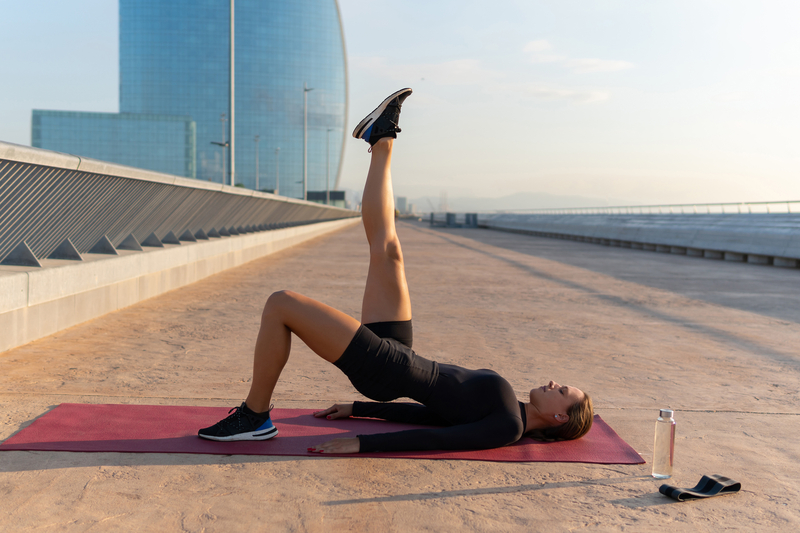We learn to tolerate many stressors throughout our lives, but stress on our body — particularly the low back — can be especially inconvenient. Low back pain has been increasingly prevalent in individuals over the past few decades, impacting as many as 31 million Americans today. While we may not be able to avoid low back pain, we can work to alleviate it through exercise.
Common Causes of Low Back Pain
Apart from any structural issues or accidents, low back pain is typically heightened by two things: sitting and inactivity.
Sitting is more prevalent than ever in our technologically advanced world. Prolonged sitting causes the muscles in our back and hips to tighten and weaken, leading to our body being more susceptible to pulls and strains. These injuries can be discouraging and debilitating, which can pose a challenge when attempting to rehab. Add improper bending, lifting and twisting in the activities of daily life into the mix, and we have a recipe for serious injury.
Solution
The solution to pesky low back pain is to stretch and strengthen the muscles contributing to the sensation. A tight muscle is a weak muscle, so simply moving around and stretching won’t rid you of low back pain completely. It is also very important to strengthen the muscles in your lower back so your body doesn’t go into protective mode and restrict or tighten up these muscles!
Below are a few stretches and exercises you can do for low back health. Stretch first, and follow up with the strength movements.
Quadratus Lumborum (QL) Stretch
The QL is a lower back muscle that tightens up from prolonged sitting. Start with your front and back legs in a 90-degree position. From here, stretch away from your back leg, allowing your chest to drop toward the ground. You should feel a stretch in your hamstrings and low back. Hold for 1 minute on each side.
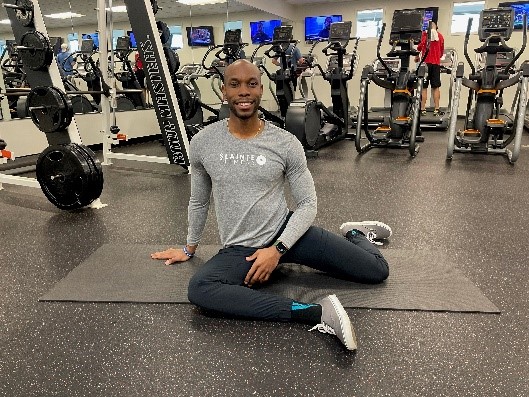
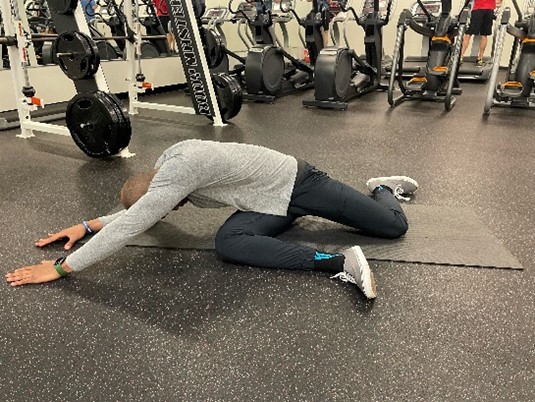
Psoas Stretch
The psoas is another muscle that weakens and tightens as a result of prolonged sitting, contributing to lower back pain. In the starting position, squeeze your glutes and laterally bend away from your knee that is on the ground. You’ll feel this stretch in the front hip of that down knee. Hold each side for 1 minute and then follow up with the proper strength movements below.
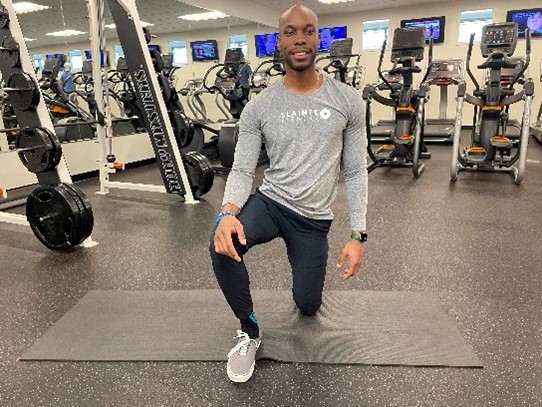
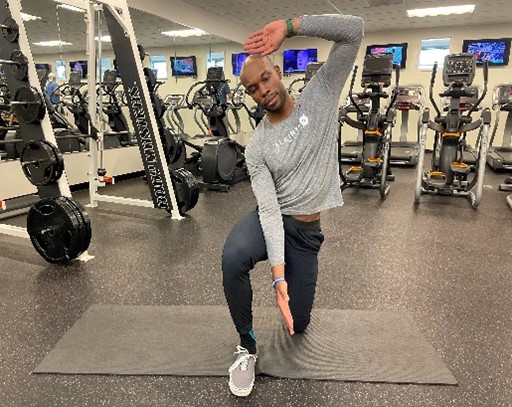
Dead Bug
This core movement is best done after stretching to teach the body proper alignment and how to utilize the core during exercise. Alternate extending your opposite arm and leg down to the ground, ensuring your lower back never raises off the ground. Perform 3 sets of 10 repetitions on each side.
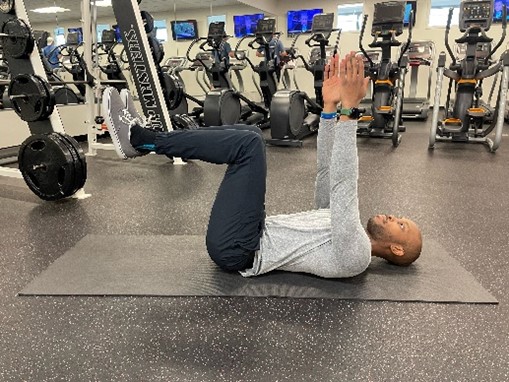
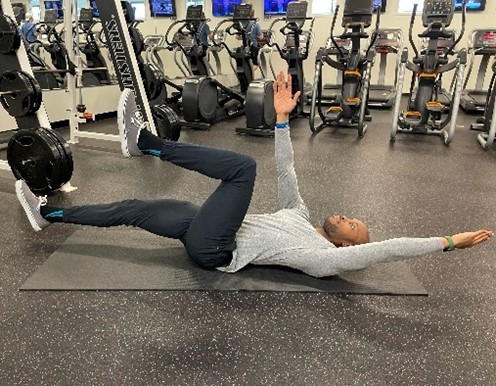
Hip Thrusts
Hip thrusts are a movement that helps with activating the glutes more efficiently and maintaining core control. From the starting position, with your shoulder blades on a bench, squeeze your glutes until your lower leg is perpendicular to the ground and your upper thigh and torso are in a straight line. If you don’t have access to a bench, a glute bridge from the floor will do just fine. Perform 3 sets of 15 repetitions.
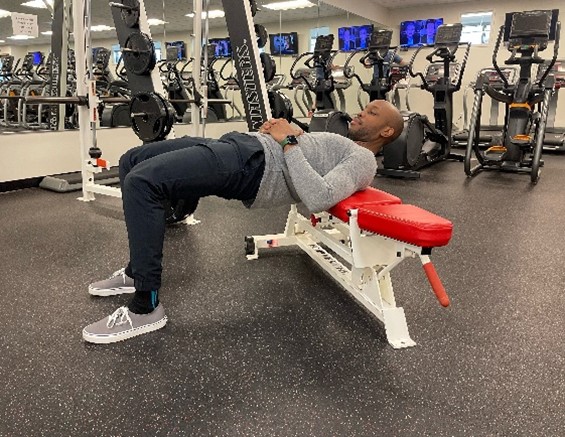
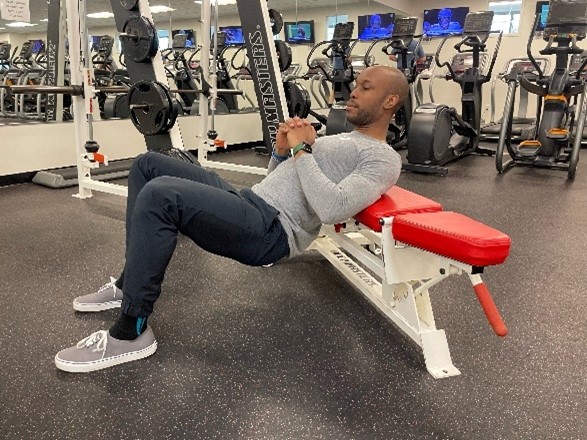
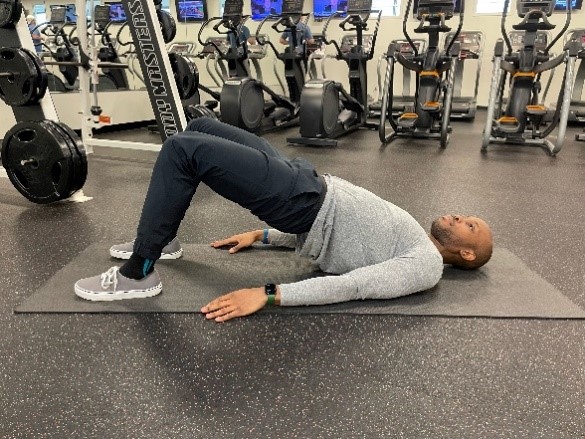
Psoas Banded March
This move strengthens the psoas muscle and prevents it from tightening up again. Start with an exercise band around your feet. Then, lift one knee toward you, to a 90-degree angle, while maintaining a flat back. Hold for two seconds before returning to the starting position. Perform 3 sets of 10 repetitions per side.
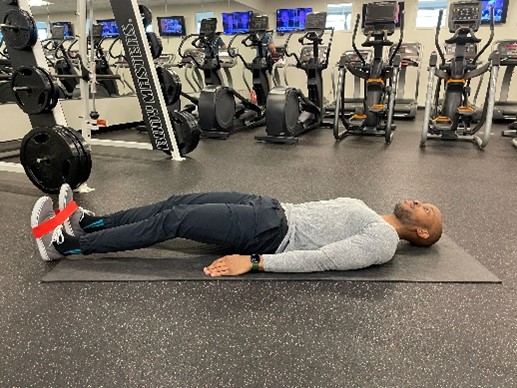
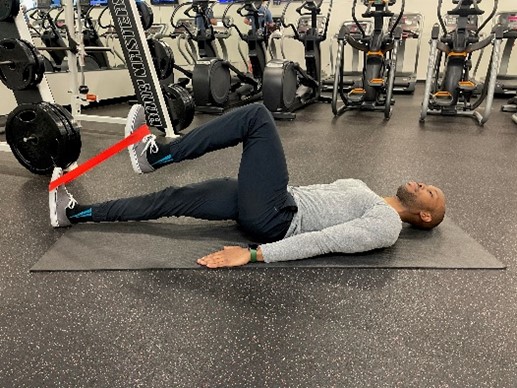
Low back pain shouldn’t be the norm. The body is a complex structure, but we have the knowledge to take care of it. Take these stretches and exercise for a spin so you can have a strong, happy low back.
By: Davon Randolph

